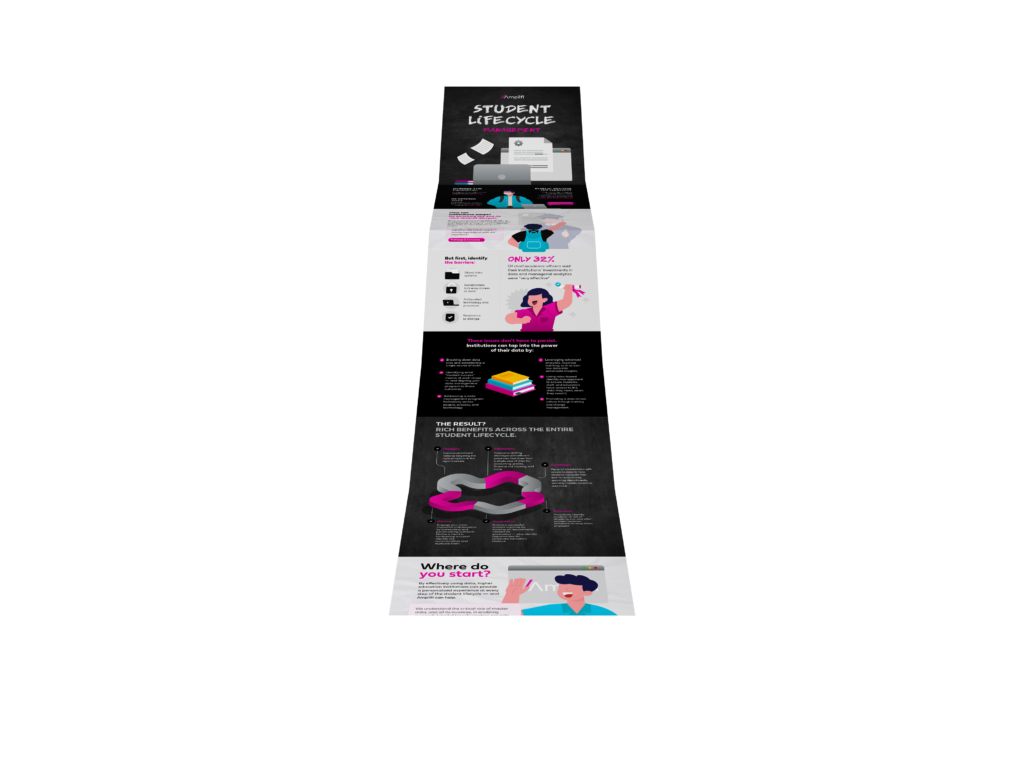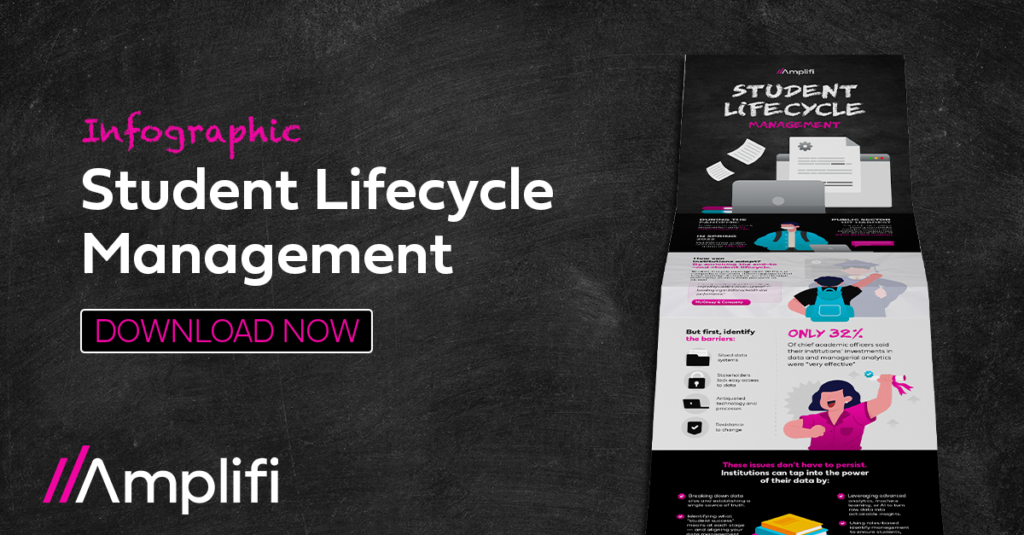When it comes to higher education, potential student, current classmates, and graduates may find an experience that’s notably changed.
More students are opting for online and hybrid learning. And overall, enrollment remains low. Recent numbers show that the public sector has suffered the most, with a 5% decline (or 604,000 students).
It’s clear that academic leaders need flexibility more than ever. They face tough questions, like:
How can we attract prospective students with changing needs? And how do we operate under tighter constraints?
To get answers, they’ll need to tap into data insights easily. But are legacy systems up to the task?
Disruption in higher education started before COVID
In 2017, only 34% of colleges met new student enrollment goals. It’s become more expensive to attend a university, and frugal Gen Zers want other options. Of course, the pandemic amplified these issues.
In 2022, higher ed also experienced new challenges — like inflation driving up expenses, spiking student loan rates, and steep declines in fundraising.
The staffing shortage is a significant concern, especially in financial aid offices. Justin Draeger, president of the National Association of Student Financial Aid Administrators, recently said:
“We are sounding the alarm bells that many financial aid offices are critically short-staffed, which could create cascading issues for those colleges and universities, both in their ability to adequately serve students while also remaining compliant with federal and state rules.”
It’s time for higher ed to rethink legacy systems
The current situation may seem a bit bleak. But institutions can change their trajectory. They must adapt to new learning models, support the student lifecycle, and improve organizational health.
In short, they need an agile response to a rapidly evolving environment.
There’s just one problem: Higher education suffers from antiquated systems that hold them back. To adapt, the education sector must take a cue from the B2B and B2C world — where agile people, processes, and technology make all the difference.
One approach is to support transformation with master data management (MDM).
Four ways flexible data management can help higher education
So, what happens when an institution becomes flexible and data-driven?
One big benefit is improving the student lifecycle — which impacts prospecting, retention, and fundraising. Solving this issue could bring significant gains.
But that’s just the beginning. Here are four ways flexible data management can help higher education.
#1: Student Recruitment
Managed data helps schools identify and replicate areas of recruiting success. For example, are there particular sports, clubs, or high school activities that drive interest in your university? What schools, regions, states, or countries yield the best prospects?
Typically, this data is anecdotal or hard to access from disparate systems and silos. With MDM, you can gather a wealth of data into a single golden record. Department leaders can use a comprehensive view of data to identify prospects and promote the school in a personalized way.
Right now, recruiting resources are limited, but MDM can help you maximize them. With better data, you can efficiently target the right prospects and develop academic plans that support student outcomes and maximize revenue.
#2: Student Engagement
Once enrolled, the challenge is to keep students engaged through to graduation. Dropouts hurt school revenue and undermine the school’s academic goals.
One way to improve retention is to identify students most at risk of withdrawing. Better data can help here, too.
With MDM, universities can systematically track student data and—based on pre-determined triggers—pinpoint the students most likely to drop out at any given time. If a student falls below a certain GPA or loses a scholarship, for example, the school can proactively design a plan that keeps the student on track.
Most schools lack proven processes to identify these students and catch issues early on. But MDM can help institutions mitigate the risk of poor student retention by using data to analyze, anticipate, and act.
#3: Diverse Learning Models
The past two years have seen an explosion of online programs in higher education. Some students prefer a hybrid model, while some are fully virtual.
Designing a mix of learning models is one of the most daunting challenges for institutions — but it is the way forward. When done well, virtual courses can unlock significant revenue opportunities and meet evolving student needs.
Some universities, for example, have established corporate partnerships to help employees upskill through online courses. Virtual programs may also help institutions reach individuals with unfinished degrees, providing them with an online option to complete the necessary credits.
Better data can help institutions apply a more personalized approach and help students navigate their education journey in the manner that works best for them.
#4: University Operations
When it comes to operational health and performance, MDM can help universities in many powerful ways, including:
- Alumni Relations – Systematize and personalize alumni outreach to engage your most impactful ambassadors.
- Fundraising Efforts – Identify successful campaigns and their commonalities, then replicate them.
- Facilities Management – Track and organize assets and suppliers to reduce costs and create efficiencies.
- Reporting Insights — Apply reporting tools across departments and locations to fully understand organizational health. Leaders can use a comprehensive view of accounting, academics, staffing, marketing, financial aid, and admissions to make improvements.
- Compliance and Security — Data governance helps reduce risk and ensures compliance with regulatory standards and privacy laws. MDM helps keep your data secure with features like roles-based access, encryption, user authentication, and access logs.
Have you tapped into your data potential?
The public sector—including higher education— is an area with so much untapped data potential. The beauty of Master data management is the ability to incrementally resolve pain points, helping you adapt no matter what the future holds.
Moving from antiquated systems to a data-led organization takes strategy, planning, and expert implementation. You’ll need data experts that understand the unique challenges of higher education and how to avoid potential pitfalls.
Have questions about how MDM could work for your higher education institution?
We’d love to talk with you or share helpful resources. We invite you to reach out to our consultants here.
 Student Lifecycle Management
Student Lifecycle Management
Here, we put data management in the spotlight to show how data influences the student lifecycle in higher education
- How can institutions adapt?
- What data can institutions tap into?
- What can be won
- Where to start



